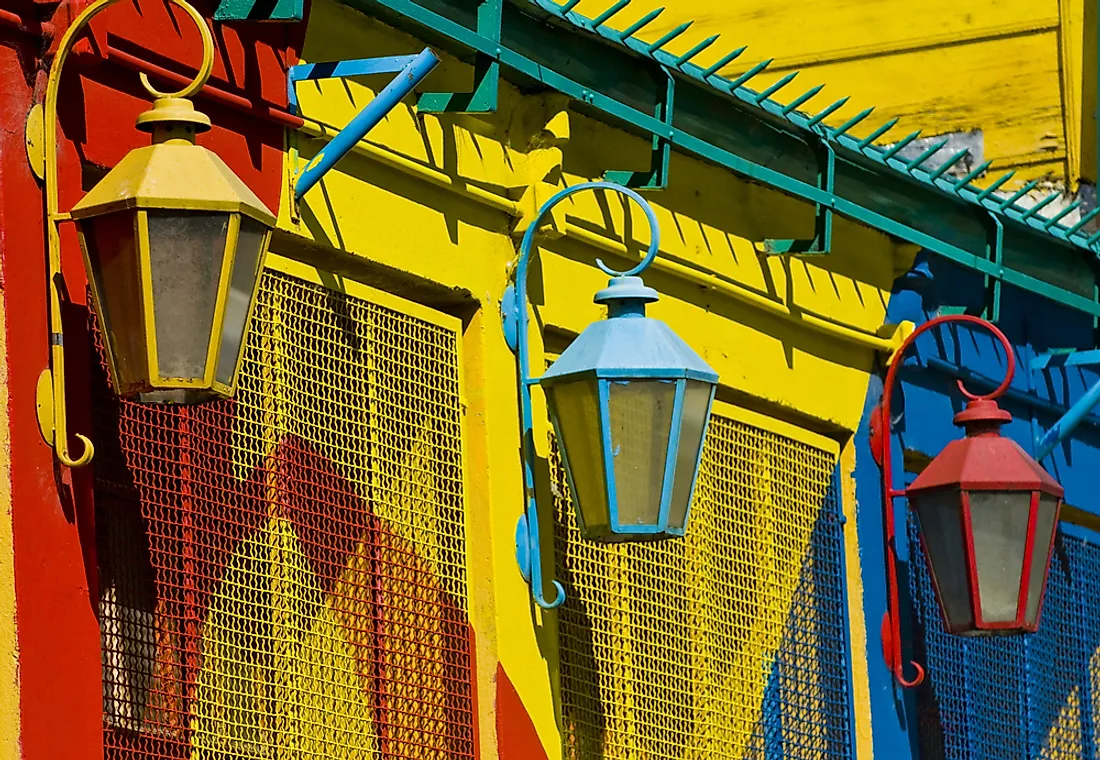The Culture Of Argentina

The South American nation of Argentina is home to a population of around 44,694,198 individuals. Spanish is the official language of Argentina. Italian, German, English, French, etc., are also spoken in the country. Some indigenous languages like the Quechua and the Mapudungun are spoken by the Amerindian communities of Argentina. Roman Catholicism is the religion of more than 90% of the Argentines. A small percentage (2%) of the population adheres to the Protestant denominations. Judaism is the religion of another 2% of Argentines.
5. Cuisine Of Argentina
The cuisine of Argentina is greatly influenced by Mediterranean (Spanish and Italian) cuisines and the cuisines of its indigenous population. The Argentine people are known for their love of eating. Social gatherings often revolve around meals. Asado (a barbeque) is an integral part of the Sunday family lunch. Homemade patties, pasta, and french fries are served on special occasions. Restaurants in Argentine cities serve a variety of local and international cuisines. Beef is the most important component of the diet. Grilled meat, especially beef ribs, and steak, is the staple. Pork sausage, blood sausage, sweetbread, chitterlings, etc., are also enjoyed. Lamb and goat are more popular in Patagonia. Fried or breaded meats are enjoyed as snacks. Some of the vegetables consumed by the Argentines include tomatoes, lettuce, onions, zucchini, squashes, etc. Traditionally, wine is the most popular alcoholic beverage in Argentina.
4. Literature And The Arts In Argentina
Argentina has a rich literary heritage and one of Latin America’s most developed publishing industries. Literature in the first half of the 19th century focused on politics and nationalism. Later, the literature in the country was influenced by the modernist movement followed by vanguardism. Argentina produced many notable artists and painters in the realm of impressionism, realism, and aestheticism. Sculptors from the country also gained international fame due to their impressive works. The popularity of muralism among Argentine artists resulted in the production of some beautiful works of art that have become cultural emblems and historical monuments in Argentina.
3. Performance Arts In Argentina
The music of the country is represented by several genres like classical, popular, and traditional. The tango music and dance that originated in Buenos Aires, Argentina’s capital city, is one of the greatest contributions of Argentina to the global culture. Argentine rock was born in the country in the 1960s. The youth of the country quickly fell in love with this style of music and it soon became part of the country’s musical identity.
2. Sports In Argentina
Football is Argentina’s most popular sport while pato is its national sport. The latter is played on horseback using a six-handle ball. The country has a national football team that has won 25 major international titles. Many players from the country participate in European football leagues. The country’s football association is one of the oldest in the world. It was established in 1893. Beach football and futsa (a variation of association football played a hard court) have also gained popularity in Argentina in recent decades. Basketball and rugby are two other popular sports played in the country. The national basketball team of Argentina has won several prestigious international basketball competitions like the gold medal at the 2004 Summer Olympics. The rugby team of Argentina is also internationally famous and is ranked high in the official world rankings. Other games played in the country include Auto racing, field hockey, polo, tennis, boxing, golf, handball, etc. The country has won more international championships in polo than any other country. The field hockey team of Argentina is also one of the world’s most successful ones.
1. Life In The Argentine Society
Both men and women enjoy equal rights and freedoms in Argentina. However, women are still under-represented in certain fields like politics and administration. Marriages are usually based on romantic relationships and are freely decided by both men and women. Although the Catholic Church of the country strongly opposes divorce, it was legalized in the 1980s. Most families in Argentina, especially in the cities, are nuclear with one or two children who usually stay with their parents until they are of marriageable age. Couples often share household responsibilities among themselves. Both sons and daughters inherit their parents’ properties equally. Children are raised by parents with help from near relatives and depending on the socioeconomic condition, by nannies or child care providers in daycare centers.
Greetings are done by kissing on the cheek or shaking hands. People stand close to each other while talking. They often touch each other while conversing. Men often use flirtatious remarks when a woman walks by. Overall, Argentines love to enjoy their time with friends and family and also have a warm and friendly attitude towards strangers.











